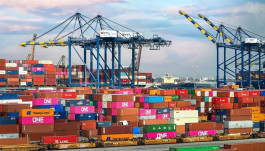Oil prices posted a significant weekly gain, after rising sharply during the last trading session last week, Friday, as the geopolitical risk premium in the market rose against the backdrop of the escalation of the war in Ukraine this week.
Price movements
Oil prices rose more than 6 percent over the past week, settling at their highest since November 7 on Friday.
Brent crude futures rose 94 cents, or 1.3 percent, to $75.17 a barrel on Friday.
U.S. West Texas Intermediate (WTI) crude futures rose $1.14, or 1.6 percent, to $71.24 a barrel.
Oil's rise came as Russia intensified its campaign in Ukraine after the United States and Britain allowed Kiev to strike deep inside Russia with weapons provided by the two countries.
“The escalation in Russia and Ukraine has raised geopolitical tensions beyond the levels seen during the year-long conflict between Israel and Iranian-backed militants,” said Ole Hansen, analyst at Saxo Bank.
Russian President Vladimir Putin said Moscow would continue to test new hypersonic Oreshnik missiles in combat and had a stockpile ready for use.
Russia fired the missile at Ukraine after Ukraine used US ballistic missiles and British cruise missiles to strike Russia.
What the market fears is that unintentional destruction of any part of the oil, gas and refining sector could not only cause long-term damage but accelerate the spread of the war, said John Evans, an analyst at PVM.
In a related context, the United States imposed new sanctions on the Russian Gazprom Bank at a time when US President Joe Biden is intensifying sanctions measures on Moscow over the war in Ukraine before leaving office on January 20.
The Kremlin said the new US sanctions were an attempt by Washington to hinder Russian gas exports, but indicated that Moscow would find a solution.
The United States has also banned food, minerals and other imports from nearly 30 Chinese companies over their alleged use of forced Uighur labor.
China, the world's largest importer of crude, announced policy measures on Thursday to boost trade, including subsidies for energy imports, amid concerns about threats by U.S. President-elect Donald Trump to impose tariffs.
Analysts, traders and ship-tracking data suggest China's crude oil imports are set to rise in November.
Oil imports in India, the world's third-largest oil importer, rose as domestic consumption increased, according to government data.









































